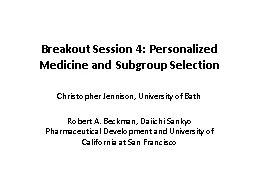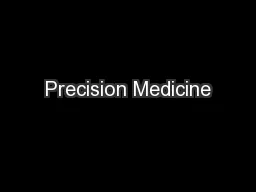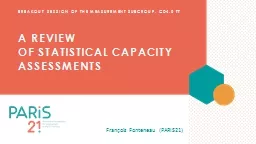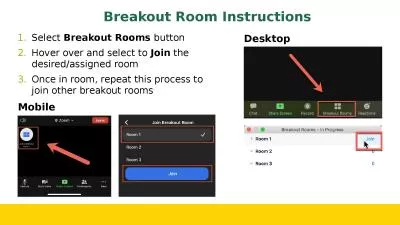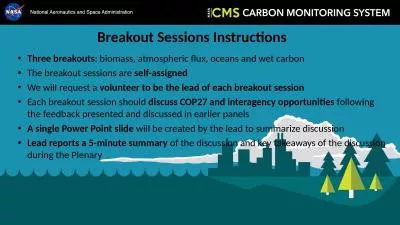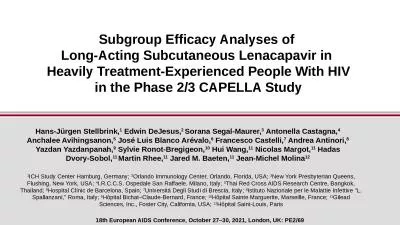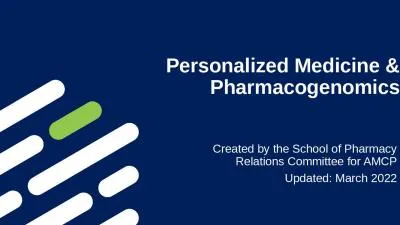PPT-Breakout Session 4: Personalized Medicine and Subgroup Sele
Author : trish-goza | Published Date : 2017-06-21
Christopher Jennison University of Bath Robert A Beckman Daiichi Sankyo Pharmaceutical Development and University of California at San Francisco Agenda TOPIC 1
Presentation Embed Code
Download Presentation
Download Presentation The PPT/PDF document "Breakout Session 4: Personalized Medicin..." is the property of its rightful owner. Permission is granted to download and print the materials on this website for personal, non-commercial use only, and to display it on your personal computer provided you do not modify the materials and that you retain all copyright notices contained in the materials. By downloading content from our website, you accept the terms of this agreement.
Breakout Session 4: Personalized Medicine and Subgroup Sele: Transcript
Download Rules Of Document
"Breakout Session 4: Personalized Medicine and Subgroup Sele"The content belongs to its owner. You may download and print it for personal use, without modification, and keep all copyright notices. By downloading, you agree to these terms.
Related Documents

